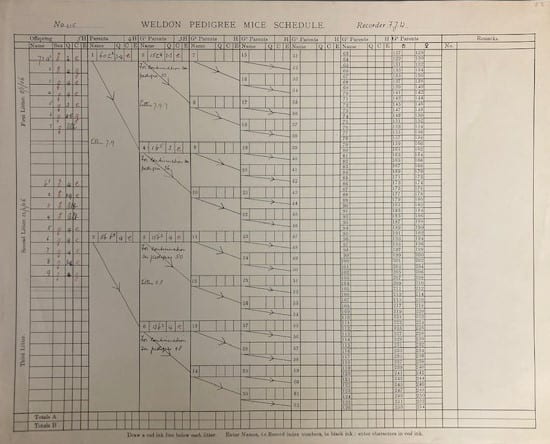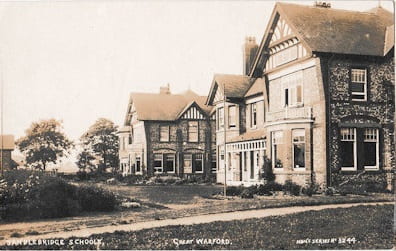“Yet but scantily peopled”: Teaching decolonising histories by re-reading children’s textbooks in imperial peripheries and in the metropole
By Nazlin Bhimani, on 8 November 2024
This post is by Pia Russell, who was was awarded the ‘Liberating the Collections Visiting Fellowship’ by the Research Institute for Collections in 2023.

Maria Lawson. A History Canada for Use in Public Schools. Toronto: W.J. Gage, 1908. p. 2. https://archive.org/details/historyofcanadaf0000laws/page/2/mode/2up
This scholarship occurs in the homelands of the WSÁNEĆ and LƏK̓ʷƏŊƏN peoples on whose lands the University of Victoria now stands and whose relationships with this land remain today.
Constructing settler colonial origin stories
In 2020 a petition signed by more than 268,000 people, asked the United Kingdom (UK) government to make the teaching of Britain’s colonial past more prevalent in the compulsory primary and secondary curriculum. In doing so, signatories hoped that children in UK schools would learn how: “Colonial powers must own up to their pasts…and how this contributes to the unfair systems of power at the foundation of our modern society.”[1] The following year, the UK’s Commission on Race and Ethnic Disparities released a report which included among its 24 recommendations the teaching of an inclusive curriculum regarding the making of modern Britain.[2] While these initiatives are not without challenges, they do demonstrate two important aspects. First, that so often schools are ground-zero for debates about collective historical consciousness. And second, that the UK is beginning a process of self-reflection about their colonial legacies which can feel overdue to many in former colonies. While there is much public and scholarly discussion of our so-called postcolonial world, those living today in the peripheries of former empires continue to experience imperial realities as very much a part of our present.
In British Columbia (BC), Canada’s most western province, the Ministry of Education implemented an entirely revised elementary and secondary (K-12) curriculum in 2016. A leading influence of this redesign was a response to calls for increased Indigenisation and decolonisation, largely influenced by the 2015 findings of the Commission for Truth and Reconciliation (TRC) Commission of Canada. The TRC was a federal government inquiry which sought to document the painful histories of the Indian Residential School (IRS) system and provide survivors of this system with opportunities to share their experiences. Among the TRC’s 94 Calls to Action, many relate specifically to education. For example, Call 62.i asks governments at all levels to: “Make age-appropriate curriculum on residential schools, Treaties, and Aboriginal peoples’ historical and contemporary contributions to Canada a mandatory education requirement for Kindergarten to Grade Twelve students.”[3] Today, BC’s K-12 curriculum policy includes Indigenous ways of knowing and being at every grade level and in every subject.[4] While considerable work still remains ahead, it is nonetheless a start towards decolonising the often fractured relationship between Indigenous and non-Indigenous peoples living within the context of the Canadian state. Whether it is controversy about curriculum, statues, the commonwealth, or museum collections, the process of how decolonisation is discussed in the heart of former empires—the imperial metropole—feels rather different than how it is increasingly discussed in its former colonies.
One powerful way for learners and educators to think about colonial legacy, is to understand how the narratives of our past often inform our present. Reflecting on our historical consciousness asks that we think critically about how it is we came to know our past.[5] By critically re-reading settler colonial origin stories we might begin to trace a line of how power was, and continues to be, expressed in the lives of people on the colonised ground. In Canada, for most non-Indigenous people, a leading source of such stories has been school textbooks. As the Education Librarian in Special Collections at the University of Victoria (UVic) Libraries, I curate BC’s historical textbooks (BCHT) collection. It is a growing print and digital archive of our province’s textbook history. In Canada, education is structured provincially so over the past 153 years of BC’s existence, a defined corpus of textbooks has been required reading for hundreds of thousands of public school pupils. What stories might these textbooks have told children over time about the place they called home? To be clear, we cannot always assume that just because children read a textbook that somehow meant they adhered to its ideology—what book historians often refer to as the receptivity fallacy[6]—but we can imagine that their interactions with the book’s narratives introduced them to commonly held attitudes portrayed in the textbooks. So, what were the early textbook stories that British Columbian’s told their future citizenry about colonization and empire? And, how might these compare to the textbook stories told in the heart of empire, the British metropole?
Liberating the Collections Visiting Fellowship

Self-image of Pia Russell, outside the Institute of Education (July 2023)
In July 2023, I had the remarkable opportunity to ask these internationally comparative scholarly questions about colonisation and empire in children’s school books when I was the 2023 Liberating the Collections Visiting Fellow at the Research Institute for Collections (RIC) at University College London’s Faculty of Education and Society. Here I had the opportunity to review dozens of UK textbooks that were contemporaneous to the ones I curate in BC. Currently my focus is on the first fifty years of BC’s textbook history. During the fellowship, I also developed wonderful professional collaborations with counterpart colleagues such as the exceptional Dr. Nazlin Bhimani, Research Support and Special Collections Librarian. Together, we were able to share best practices for the unique technical aspects of the rare books we curate, and also comparatively discuss the social contexts our collections exist within. Serving as a Liberating the Collections Visiting Fellow initiated a completely new and innovative line of inquiry within my existing program of scholarship. My long-term scholarship has focused on decolonising, anti-racist, and feminist analyses of these unique historical sources. Most often I partner with and take guidance from Indigenous colleagues who work locally. This is essential, truth-telling work that seeks to establish more respectful cross-cultural research partnerships and personal connections. Through a Liberating the Collections Visiting Fellowship, I was able to include a dynamic international dimension to my historical textbook scholarship and this provided a beautiful complement to my already established local relationships closer to home. When engaging in decolonising work in such deeply colonised lands as British Columbia (a problematic colonial name, to be sure), such complementarity not only strengthens the scholarly work but also takes seriously the responsibility of being a historian working in this place. When reflecting on the histories, presents, and futurities of the Indigenous homelands where I reside, understanding the centuries old power structures of the British empire that instigated this colonisation through actions such as map making, land surveying, and textbook provisioning is essential. Through my Fellowship at the UCL’s RIC, I strengthened my understanding of critical imperial studies alongside my engagement with local Indigenous ways of knowing and being. As a result from dialog with colleagues such as Dr. Bhimani and while examining rare books in the RIC, I am now better able to fulfill my responsibilities as a historian who hopes to raise up previously suppressed voices and bring their histories in from the literal and figurative margins of both BC’s and Britain’s historical school textbooks. Our vocational partnerships show much future promise and I look forward to exciting public history work together in the years to come.
Side-by-side: comparing historical textbook narratives
One specific outcome of my time as a Liberating the Collections Visiting Fellow at the Research Institute for Collections (RIC) was the development of a teaching resource that utilises these textbooks as historical objects of truth-telling instigation. The resource seeks to embrace a pedagogical approach that is comprehensively decolonising. By drawing upon both the UK’s Key Stage Three History curriculum alongside BC’s Grade 9 Social Studies curriculum, we now have an internationally cohesive, curriculum-aligned, learning tool.[7] This resource guides teachers and students through critical re-readings of historical textbooks to reveal that narratives of empire did not tell the whole story and had considerable consequences lasting up until today. (more…)
 Close
Close










